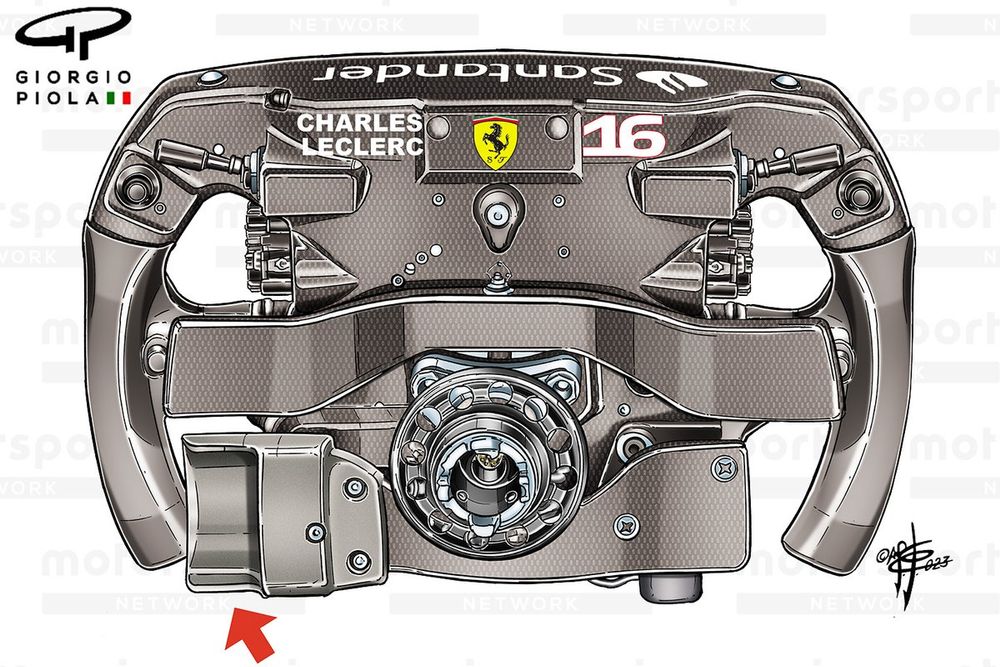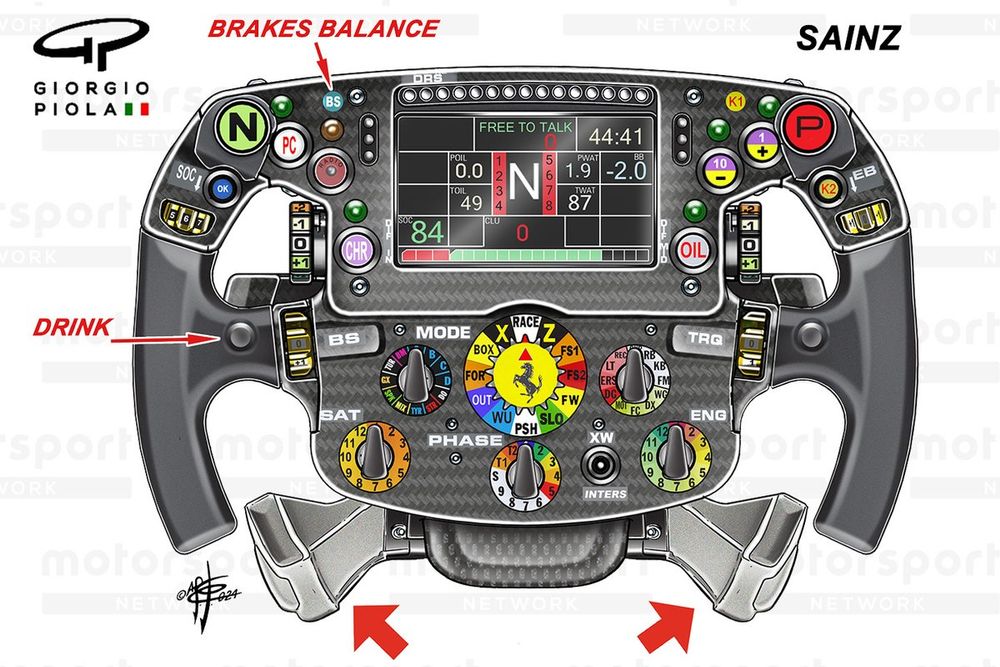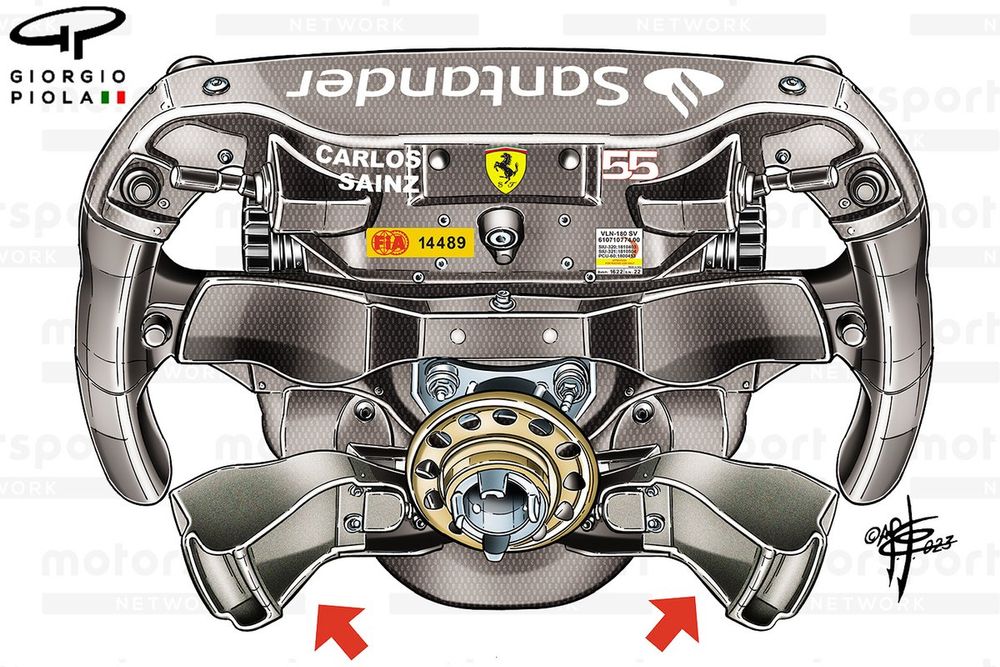The wheel still steers the car – not everything has changed! – but this simple function to direct the car has been added to time and again.
In essence, F1 reinvented the wheel’s usage, and it has undergone incredible development across the last 35 years.
F1 steering wheels now also provides the driver and their engineers with a wealth of information that can lead to better decisions, while also offering an interface with which to control key functions for the power unit and chassis.
For those reasons, let alone the ergonomic alterations that are also made, a steering wheel is customised on an individual level for each driver.
If we take Ferrari as an example, there’s one significant difference in the layout of Charles Leclerc and Carlos Sainz’s steering wheels, with both drivers having a different preference when it comes to the layout of their clutch paddle(s).
Steering wheel of Carlos Sainz, Ferrari SF-24
Photo by: Giorgio Piola

Steering wheel of Charles Leclerc, Ferrari SF-24
Photo by: Giorgio Piola
Leclerc prefers a single, wishbone-style paddle, with a left-hand hinge that allows him to use his right hand to modulate the clutch. Meanwhile, Sainz has a twin paddle layout, which gives him the option of using either hand to operate the clutch.
This may seem like a subtle difference but there’s obviously a very different ratio in the movement of each paddle, which clearly works better for how they feel and activate the clutch.
Sainz arrived at Ferrari having already used a similar layout on his McLaren steering wheel in 2020 and retained it, whereas Leclerc had previously operated a twin-paddle layout at Sauber and made the switch to the wishbone-style layout that Ferrari had become familiar with, having worked with the same design during Sebastian Vettel’s and Kimi Raikkonen’s tenure.
In a sea of buttons, switches and rotaries, all of which have dominion over certain aspects of the chassis and power unit, each driver further explores what works best for them, with some of the thumb rotaries in the upper half of the wheel providing different functionality for each driver, while buttons can also be moved to better suit each driver’s needs.

Steering wheel of Carlos Sainz, Ferrari SF-24
Photo by: Ferrari
This is one aspect of Ollie Bearman’s debut, in the Saudi Arabian Grand Prix, that shows how impressive a job the Brit did at such short notice. He used Carlos Sainz’s steering…
Click Here to Read the Full Original Article at Motorsport.com – Formula 1 – Stories…

